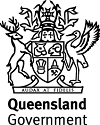Published Wednesday, 17 July, 2024 at 03:30 PM

Minister for Resources and Critical Minerals
The Honourable Scott Stewart
Positive progress in regulated tree clearing throughout Queensland
- Latest tree clearing report shows a 64% reduction in regulated vegetation clearing over four years.
- More vegetation regrowth has been detected.
The latest nation-leading Statewide Landcover and Trees Study (SLATS) report and accompanying vegetation management analysis shows Queensland’s vegetation management laws continue to protect native ecosystems.
The report analysed woody vegetation clearing over the 2021-22 period, with the results demonstrating the Miles Government’s vegetation management laws strike the right balance between conservation and the ability of landholders to maintain their properties.
The report showed a decrease of 7% in overall clearing activity across the State compared with the previous year’s report, and a 13% decrease in clearing activity in Great Barrier Reef catchments.
Of the overall clearing, 78% of the vegetation was assigned Category X, which is vegetation that is generally exempt from regulation under the vegetation management framework.
Clearing of regulated vegetation increased from 61,400 hectares in 2020-21 to 71,100 hectares in 2021-22.
The increase is largely due to more landholders managing vegetation encroachment on native grasslands in response to the sequential wet years Queensland has experienced.
A further 31,097 hectares of regrowth was mapped as part of the study, adding to the 59,654 hectares of new growth mapped the previous year.
Quotes attributable to the Minister for Resources, Scott Stewart:
“The reduction in regulated vegetation clearing of 64% over four years is a good outcome for biodiversity and carbon emission reductions in Queensland.
“The report shows Queensland’s strong vegetation management framework continues to protect our native ecosystems, while allowing landholders to manage their properties and grow the food and fibre that is fundamental to our economy and our regional communities.
“The results are encouraging and show the long-term, positive impacts of the legislative changes the Queensland Government made back in 2018.
“These laws have been and will continue to be based on the best available science.
“Our ongoing challenge is to reduce unlawful clearing and we’ll continue to work with landholders to educate and assist them in understanding their obligations.
“My department takes a proactive approach to compliance and continues to invest resources to ensure landholders meet their responsibilities under the vegetation management framework.”
Quotes attributable to the Environment and the Great Barrier Reef, Leanne Linard:
“The Statewide Landcover and Trees Study is an important tool as it allows us to monitor how much land is being cleared and ongoing vegetation clearing trends.
“The data contained in the latest SLATS report shows a continued downward trend in vegetation clearing, which is welcome.
“We know that too much native vegetation clearing has adverse effects. Among other things, it can impact regional communities, threatened species habitats, trade opportunities, climate action and the health of the Great Barrier Reef.
“The latest SLATS report shows that by working with industry, stakeholders, and the community, we are continuing to reduce these impacts, contributing to improving ecosystems and wildlife, climate change and reef health.”
Quotes attributable the Minister for Agricultural Industry Development, Mark Furner:
“The Miles Government’s approach to vegetation management ensures landholders, including Queensland’s primary producers, are able to maintain their land effectively and conserve vital local ecosystems.
“It’s pleasing to see most people are doing the right thing.
“If landholders are unsure of what they can and can’t cut down, it’s important they check before undertaking land clearing.”
Further information:
The Statewide Landcover and Trees Study (SLATS) is a scientific monitoring program undertaken by the DES Remote Sensing Sciences team in partnership with the Queensland Herbarium and Biodiversity Sciences, Department of Resources and the Joint Remote Sensing Research Program.
Satellite imagery and field data is used to monitor and report changes in woody vegetation extent in Queensland and provide information about other woody vegetation attributes such as age since disturbance.
SLATS monitors native woody vegetation, which is critical for maintaining biodiversity, preventing land degradation and improving water quality.
Spatial BioCondition is a new modelling and mapping framework that has been developed, and over time will be used to predict and map the condition of vegetation in most of Queensland’s regional ecosystems.
Further information about the SLATS report can be found at https://www.qld.gov.au/environment/land/management/vegetation/slats-analysis
ENDS

